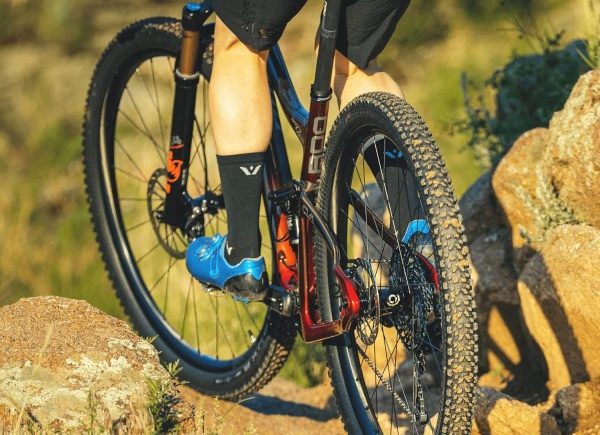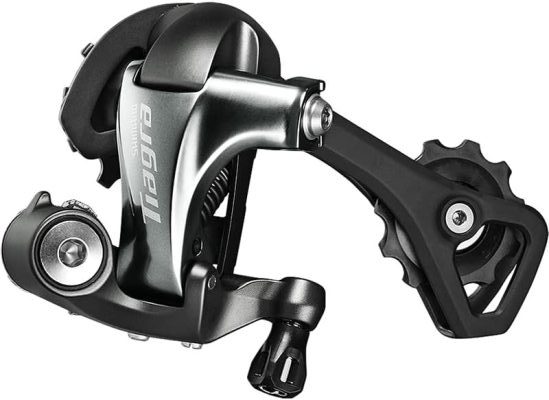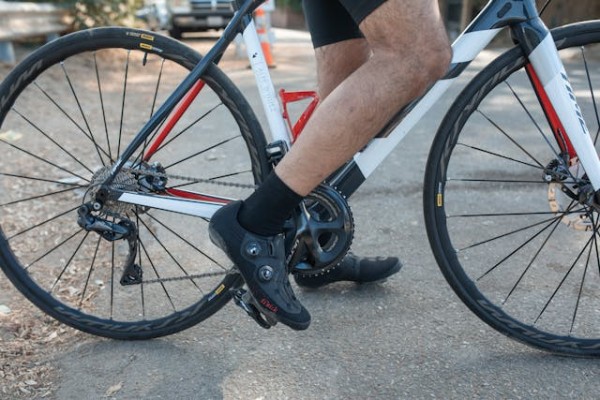If you’ve ever found yourself stuck in a punctured tire situation, desperately searching for a spare tube or patch kit, then you know the frustration that comes with it. But what if there was a way to eliminate those tire-related headaches and make your rides smoother and more hassle-free?
Well, switching your bike to tubeless tires might just be the solution you’ve been looking for. By embracing this innovative technology, you’ll experience a whole new level of performance and convenience on the road or trails. Get ready to say goodbye to flats and hello to a whole new cycling experience.

1. Benefits of Tubeless Tires
One of the key advantages is the ability to run lower tire pressures without the risk of pinch flats. This is made possible by the absence of an inner tube, which eliminates the need for a hard rim strip and allows the tire to conform better to the terrain. Lower tire pressures provide better traction and a smoother ride, especially on rough or off-road surfaces.
Additionally, tubeless tires are less prone to punctures because they self-seal small holes with sealant, preventing air leakage. This feature significantly reduces the need for tire repairs or replacements. Furthermore, tubeless setups are generally lighter than their tubed counterparts, resulting in improved acceleration and maneuverability.
2. Step-by-Step Guide to Switching
To begin the process of switching to tubeless tires for your bike, gather all the necessary tools and materials. You’ll need a tubeless conversion kit which typically includes tubeless rim tape, tubeless valves, sealant, and sometimes valve cores. Additionally, you’ll need a floor pump or an air compressor with a pressure gauge, tire levers, a small brush or sponge, and some soapy water.
First, remove the old tires and tubes from your bike. Clean the rim thoroughly to ensure proper adhesion of the tubeless rim tape. Apply the tubeless rim tape evenly, ensuring it covers the entire rim bed and forms a tight seal. Insert the tubeless valve into the valve hole and tighten it securely.
Next, mount the tubeless tire onto the rim using tire levers if necessary. Ensure the tire bead is properly seated on both sides of the rim. Now, it’s time to add the sealant. Remove the valve core using a valve core remover and pour the recommended amount of sealant into the tire. Reinstall the valve core and tighten it.
Finally, inflate the tire using a floor pump or air compressor. Be sure to follow the manufacturer’s guidelines for the correct tire pressure. Use soapy water to check for any leaks around the tire bead and valve. If there are any leaks, gently inflate the tire to help the sealant plug them.
3. Choosing the Right Tubeless Setup
When selecting the appropriate tubeless setup for your bike, it’s crucial to consider factors such as tire width, rim compatibility, and intended riding conditions. Tire width plays a significant role in determining the right tubeless setup. Wider tires offer more grip and stability, especially on rough terrains, while narrower tires are better suited for smoother surfaces and higher speeds.
Rim compatibility is another important consideration. Make sure your rims are tubeless-ready or can be converted to tubeless using a conversion kit. It’s essential to ensure a proper seal between the tire and rim to prevent air leakage. Lastly, consider the intended riding conditions. If you ride predominantly on trails or rough terrains, a more robust tubeless setup with thicker sidewalls and puncture protection is recommended. For smoother roads or racing, a lighter setup with a thinner casing may be more suitable.
4. Tips for Maintaining Tubeless Tires
To ensure optimal performance and longevity of your tubeless tires, it’s crucial to follow proper maintenance practices. Regular inspection of your tubeless tires is essential to identify any potential issues before they become major problems.
Start by checking the tire pressure regularly, using a reliable pressure gauge. Maintaining the recommended tire pressure not only enhances the tire’s performance but also minimizes the risk of pinch flats.
Additionally, inspect the tire for any cuts, punctures, or bulges that could compromise its integrity. If you encounter any damage, it’s important to address it promptly by either replacing the tire or applying a suitable sealant.
5. Common Challenges and Solutions
Regular maintenance of your tubeless tires is crucial for optimal performance. Being aware of common challenges and their solutions will help you ride with confidence.
One common challenge with tubeless tires is the occurrence of leaks. Leaks can be caused by punctures or improper installation. To fix a puncture, simply remove the object causing the puncture and apply a tubeless sealant to seal the hole. For improper installation, check if the tire bead is properly seated on the rim and ensure there are no gaps.
Another challenge is burping, which happens when air escapes between the tire bead and rim during hard cornering or impacts. To prevent burping, inflate your tires to the recommended pressure and make sure the bead is properly seated. If burping still occurs, increase tire pressure or consider using a tire with a stiffer sidewall.
Frequently Asked Questions
How Do Tubeless Tires Affect the Overall Weight of the Bike?
When you switch your bike to tubeless tires, it affects the overall weight by reducing it. Tubeless tires eliminate the need for inner tubes, which are heavier than the tubeless setup.
By removing the tubes, you reduce rotational weight, making your bike more responsive and easier to accelerate. Additionally, without the tubes, you can run lower tire pressures, increasing traction and comfort.
Can I Use Tubeless Tires on Any Type of Bike?
You can use tubeless tires on any type of bike. They offer numerous benefits such as improved traction, reduced rolling resistance, and increased puncture resistance. The tubeless system eliminates the need for inner tubes, allowing you to run lower tire pressures without worrying about pinch flats. This is particularly advantageous for off-road riding, as it enhances grip and control.
However, it’s essential to ensure that your rims are compatible with tubeless tires and to follow the proper installation procedures for optimal performance.
Are Tubeless Tires More Prone to Flats Than Traditional Tires?
Tubeless tires aren’t more prone to flats than traditional tires. They’re designed to reduce the chances of flats. Tubeless tires use sealant that fills puncture holes, preventing air leakage and maintaining tire pressure.
This technology also allows for lower tire pressures, enhancing traction and comfort while riding. By eliminating the inner tube, tubeless tires offer a more reliable and durable solution, making them a popular choice among cyclists looking for a smoother, hassle-free ride.
What Is the Average Lifespan of a Tubeless Tire?
The average lifespan of a tubeless tire depends on several factors. These factors include the type of terrain you ride on, your riding style, and the quality of the tire itself. Generally, a tubeless tire can last anywhere from 1,500 to 3,000 miles before needing replacement.
However, it’s important to regularly inspect your tire for any signs of wear or damage. This is because wear or damage can affect the lifespan of the tire. Proper maintenance is also crucial in prolonging the life of your tubeless tires. This maintenance includes checking tire pressure and sealant levels.
Are Tubeless Tires More Expensive Than Traditional Tires?
Tubeless tires can be more expensive than traditional tires due to their specialized design and construction. However, the benefits they offer, such as improved traction, reduced punctures, and lower rolling resistance, often outweigh the higher cost.
Additionally, tubeless tires can be more cost-effective in the long run as they require fewer replacements and repairs. It’s important to consider your riding needs and budget when deciding whether to switch to tubeless tires.
Conclusion
Congratulations! You’ve successfully unlocked the power of tubeless tires. Like a sleek, agile cheetah, your bike now glides effortlessly through any terrain, leaving behind the limitations of traditional tubes. Embrace the freedom, the speed, and the confidence that tubeless tires bring. As you conquer new trails and push your limits, remember that the journey isn’t just about the destination, but the thrill of the ride itself.





